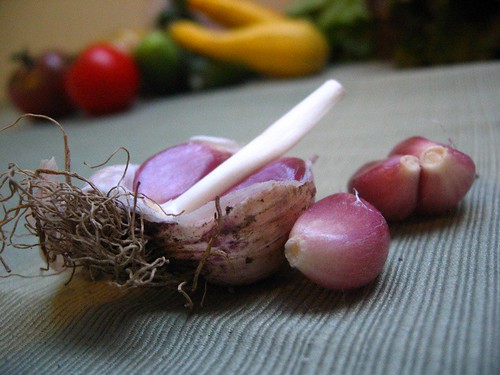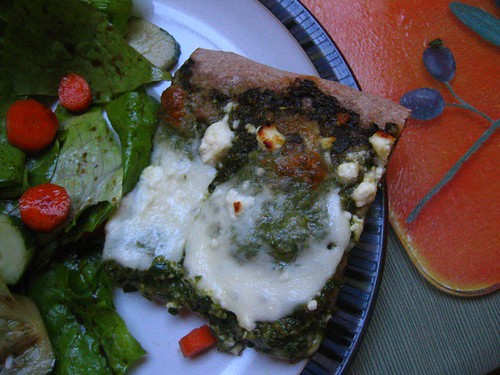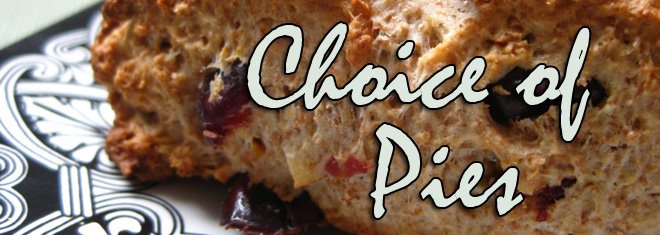 Last week, purple peppers; this week, purple garlic! Isn't it beautiful? This must be the garlic that sent off the scapes we got a few weeks ago. I just love this color.
Last week, purple peppers; this week, purple garlic! Isn't it beautiful? This must be the garlic that sent off the scapes we got a few weeks ago. I just love this color.Speaking of color, it's that time of the season when the box is packed with so many different colors (not just green, like we had in June). Of course we are still getting lots of lettuce (curly red stuff, this time), which is good since salads are such a staple in our house. We also got a huge bunch of basil this time as well as a big load of scallions. There's also fennel - another new food for me - and some cucumbers. Beets, carrots, tomatoes, and tender, little summer squashes add punches of color between all the green.

The first thing I tackled was the basil, since we still had some from week 7 and I didn't want any of it to go to waste.
 I've heard that the best way to preserve basil is in oil and in the freezer, and pesto is probably the easiest way to do this. I whipped up a few batches of this on Sunday night, some of which went on our pizza. I put the rest in a plastic-wrap-lined ice cube tray so I could freeze it in small blocks, which I later transferred to a freezer bag. Now when we want pesto it will be easy to grab one or two cubes to thaw.
I've heard that the best way to preserve basil is in oil and in the freezer, and pesto is probably the easiest way to do this. I whipped up a few batches of this on Sunday night, some of which went on our pizza. I put the rest in a plastic-wrap-lined ice cube tray so I could freeze it in small blocks, which I later transferred to a freezer bag. Now when we want pesto it will be easy to grab one or two cubes to thaw.To make pesto, all you need to do is combine fresh basil and pine nuts (about one packed cup of basil and 1/3 c. pine nuts is a pretty good ratio). You can use a blender or a food processor; my mini-Cuisinart works great for this. Once the basil and nuts are well-blended, you need to add a little olive oil. Ideally, you want it to emulsify with the other ingredients, so if possible, pour it in a thin stream while your blender or food processor is running. The MiniCuisinart actually has a small well with a tiny hole built into the lid for exactly this purpose. Once these three ingredients are blended, mix in some grated parmesan or romano cheese (roughly 1/3 c. to 1/2 c., according to your preference). If you are going to freeze the pesto, hold off on the cheese and instead add it to the thawed herb blend right before serving.
We used our pesto on wholegrain pizza dough with some fresh mozzarella and a little feta, served, of course, with a big leafy salad on the side.




No comments:
Post a Comment